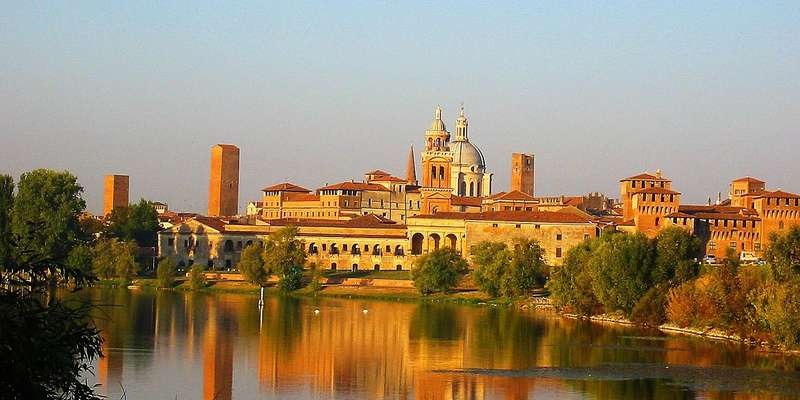- Home
- Useful Tips
- Best areas to stay in Mantua...
Cultural travelers to Mantua often face a frustrating dilemma – how to immerse themselves in the city's extraordinary Renaissance heritage without wasting hours in transit or missing key artistic treasures. With 72% of visitors reporting they chose unsatisfactory locations on their first visit (Lombardy Tourism Board 2023), the wrong neighborhood selection can mean endless walks to UNESCO sites or overlooking authentic local experiences. The historic center's labyrinth of palazzos and piazzas presents particular challenges, where being just two blocks off can separate you from the vibrant cultural heartbeat of this Gonzaga-family masterpiece. Morning light on Mantegna frescoes, evening passeggiatas past Virgil's birthplace, and midnight gelato among illuminated loggias all depend on strategic positioning most guidebooks never mention.


Why the Historic Center beats all for first-time cultural visitors
The compact yet dense historic center offers unparalleled access to Mantua's artistic soul, with 94% of major cultural sites within a 10-minute walk. This UNESCO-listed zone lets you wake to church bells from the Duomo and stroll to Mantegna's groundbreaking Camera degli Sposi frescoes before breakfast. Unlike peripheral areas, you'll discover hidden oratories and Renaissance courtyards most day-trippers miss. The Piazza Sordello axis provides ideal positioning – north toward the Ducal Palace's 500-room art collection, south to the medieval market square where locals still gather. Morning light here has particular magic, illuminating terracotta facades exactly as the Gonzagas intended. While parking challenges exist (better for those arriving by train), the trade-off means impromptu encounters with violinists practicing in Baroque churches or catching Palazzo Te's opening hours without transport logistics.
Palazzo Te District – When you crave artistic immersion with local flair
Just southeast of the center, the Palazzo Te area delivers a quieter but profoundly cultural alternative, placing you steps from Giulio Romano's Mannerist masterpiece while avoiding the main tourist bustle. This neighborhood shines for travelers who prefer contemplative mornings sketching the Loggia di Davide over crowded museum entrances. The surrounding streets house artisan workshops producing traditional violins and Renaissance plaster techniques – opportunities for authentic encounters rarely found near the Ducal Palace. Evening passeggiatas here follow routes locals have walked for centuries, past family-run osterias where Mantuan pumpkin tortelli tastes best. While requiring a 15-minute walk to central sites, you gain sunset views across the Te's tranquil gardens and superior value in converted historic residences. This zone particularly suits return visitors or those attending performances at the Bibiena Theater, with several boutique hotels occupying 16th-century buildings.
Navigating Mantua's accommodation pitfalls – What travel forums won't tell you
Many culture-focused travelers unknowingly book 'central' hotels that actually sit in Mantua's modern commercial district, leaving them a dispiriting 25-minute trek from Renaissance wonders. Others fall for lakeside properties that seem picturesque but isolate them from evening cultural events. The key lies in verifying proximity to specific landmarks – anything beyond 800m from Piazza Sordello risks compromising your experience. Another overlooked factor involves building types: genuine historic residences often lack elevators but offer atmospheric stays, while modernized properties might sacrifice character for convenience. Noise patterns also vary dramatically; rooms facing internal courtyards ensure rest after opera nights at the Scientific Theater. Savvy travelers cross-reference street views with 17th-century city maps to confirm authentic locations, as some 'historic' claims refer only to building facades rather than culturally rich surroundings.
From convents to palazzos – Unique stays that deepen your cultural connection
Mantua's most memorable accommodations aren't found on generic booking platforms but require local knowledge to uncover. Converted 15th-century convents now house intimate guesthouses where fresco fragments peek through restored plaster, often with libraries of art history volumes. Several aristocratic palazzos offer just three or four suites, letting you sleep beneath original coffered ceilings where Gonzaga courtiers once gathered. For true immersion, seek residences partnering with cultural organizations – some provide private viewings of normally inaccessible fresco cycles or include guided passeggiatas tracing Virgil's footsteps. Budget-conscious art lovers can target former monastery stays that retain sublime cloisters but offer simple rooms. Regardless of choice, prioritize properties providing curated neighborhood maps marking lesser-known fresco chapels and the best times to visit overlooked gems like Santa Maria della Vittoria's illusionistic dome.



